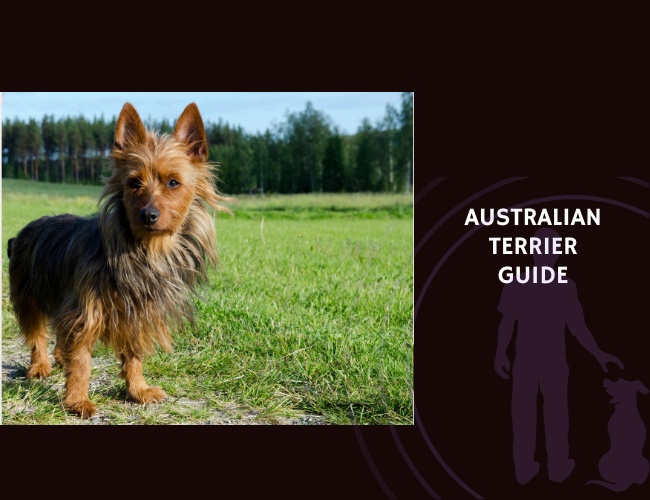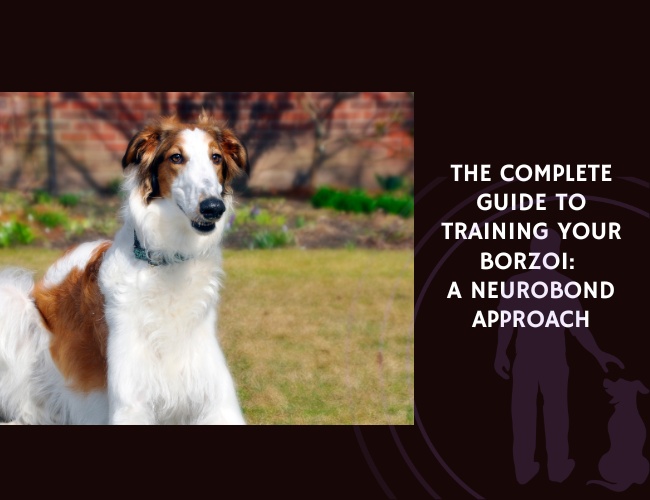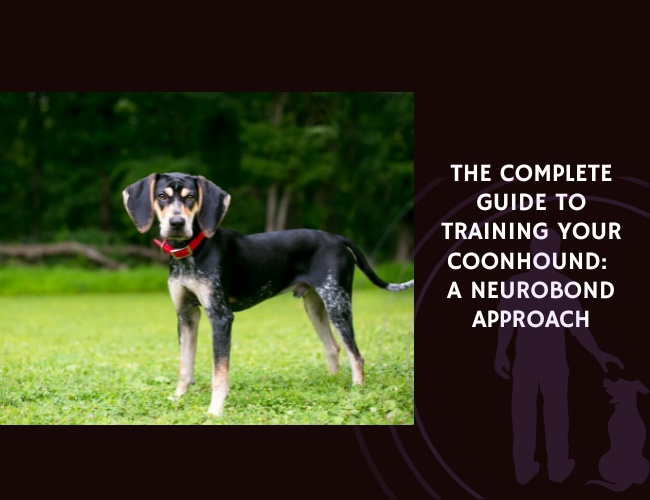Welcome to your comprehensive journey into understanding one of Australia’s most spirited and devoted canine companions. The Australian Terrier, affectionately known as the “Aussie,” represents a remarkable blend of working dog tenacity and family companion devotion. Let us guide you through everything you need to know about these plucky little terriers who pack enormous personality into their compact frames.
Did you know that despite their small stature, Australian Terriers were brave enough to hunt snakes in the Australian outback? This fascinating breed emerged in the 19th century when early settlers needed a versatile dog that could control vermin, guard homesteads, and still curl up as a loving family member at day’s end. Today, we’ll explore how these historical roots shape the modern Australian Terrier’s character, needs, and the unique joy they bring to their families.
Character & Behavior: Understanding Your Aussie’s Personality
The Spirited Nature of Your Australian Terrier
Your Australian Terrier carries within them the heart of a much larger dog. These confident little companions demonstrate what we call “big dog syndrome” in the most endearing way possible. You might notice your Aussie strutting around with a self-assured gait that suggests they believe they’re the size of a German Shepherd!
Core Temperament Traits:
- Plucky and Courageous: Your Aussie won’t back down from challenges, whether it’s investigating a strange noise or standing their ground with larger dogs
- Intelligent and Alert: That bright-eyed expression isn’t just for show – these dogs miss nothing in their environment
- Sensitive Yet Sturdy: Behind that tough terrier exterior lies a dog deeply attuned to your emotions
What makes the Australian Terrier truly special is their ability to switch between fearless protector and gentle companion. One moment they’re alerting you to a visitor with their distinctive bark, and the next they’re contentedly snuggled in your lap, soaking up affection. 🧡
The Hunter Within: Understanding Prey Drive
Let’s talk about something crucial to understanding your Aussie – their prey drive. Remember, these dogs were bred to hunt vermin, and this instinct runs deep in their DNA. You’ll likely observe what we call the “terrier leap-twist-and-pounce” – a fascinating hunting behavior that’s both athletic and purposeful.
What This Means for You:
- Your Aussie will likely chase anything that moves quickly – squirrels, rabbits, even blowing leaves
- Off-leash reliability is extremely challenging to achieve with this breed
- Your backyard needs secure fencing, as these athletic little dogs can jump surprisingly high
- Small pets like hamsters or guinea pigs may trigger their hunting instincts
This doesn’t mean your Australian Terrier is aggressive – it simply means they’re following instincts honed over generations. Understanding this helps you manage their environment appropriately and channel these drives into positive activities.
Building Bonds: Your Aussie’s Attachment Style
One of the most endearing qualities of the Australian Terrier is their profound devotion to their human family. These dogs don’t just live with you – they become your constant shadow, following you from room to room with unwavering dedication.
Signs of Their Deep Attachment:
- Following you throughout your daily routines
- Sensitivity to your emotional states (they know when you’re sad!)
- A preference for being involved in all family activities
- Potential for separation anxiety if left alone too frequently
Your Australian Terrier thrives on companionship. They’re not the type of dog who’s content to spend hours alone in the backyard. Instead, they want to be wherever you are, whether you’re cooking dinner, working from home, or relaxing on the couch. This velcro-dog tendency makes them exceptional companions for those who want a truly involved canine family member. 🐾
Social Dynamics: Getting Along with Others
Here’s where things get interesting – and where you’ll need to be particularly mindful. Australian Terriers can be selective about their canine friendships, especially when it comes to dogs of the same sex.
Understanding Their Social Preferences:
- Males typically don’t coexist peacefully with other male dogs
- Opposite-sex pairings tend to work better in multi-dog households
- Early socialization is crucial but won’t override all breed tendencies
- They may see cats and other small pets as prey rather than friends
Many Aussie owners find that their dogs are perfectly content being the only pet, basking in all the attention. However, with proper introductions and management, some Australian Terriers do well in multi-pet homes – it’s all about understanding your individual dog’s tolerance levels and respecting their boundaries.
Training & Education: Nurturing Your Aussie’s Brilliant Mind
The Quick Learner’s Paradox
Your Australian Terrier possesses a sharp, agile mind that can learn new commands with impressive speed. Yet, here’s the fascinating paradox – they’re independent thinkers who might decide whether your command is worth following! This isn’t stubbornness in the traditional sense; it’s the hallmark of a breed developed to work independently while hunting.
Making Training Work:
- Start training as early as 4 weeks old if you’re working with a breeder
- Keep sessions short (5-10 minutes) but frequent
- Use high-value treats that really motivate your individual dog
- Vary your training locations to maintain interest
Remember, your Aussie learns quickly but gets bored just as fast. The key is making training feel like an exciting game rather than a chore. When they realize that following your lead results in fun and rewards, you’ll have a willing and enthusiastic student.
Managing the Watchdog Within
That alert bark you’ll hear? It’s your Australian Terrier doing what they were bred to do – keeping watch over their territory. While this makes them excellent watchdogs, it can also lead to excessive barking if not properly managed.
Barking Management Strategies:
- Teach a “quiet” command using positive reinforcement
- Provide alternative behaviors when triggers occur (like going to a mat)
- Never shout at a barking Aussie – they’ll think you’re joining in!
- Address the underlying cause (boredom, anxiety, or genuine alerts)
Think of barking as your dog’s way of communicating. Rather than trying to eliminate it entirely, we want to teach them when it’s appropriate and when it’s time to settle down. With patience and consistency, you can achieve a balance that respects their nature while maintaining neighborhood peace.
Channeling Natural Instincts Productively
Here’s where training gets really exciting! Your Australian Terrier’s hunting heritage makes them naturals at scent work and earth dog activities. These aren’t just fun hobbies – they’re essential outlets for breed-specific behaviors.
Enriching Activities to Try:
- Barn Hunt: A sport that mimics hunting rats in a barn setting (using safely housed pet rats)
- Scent Work: Teaching your dog to find specific odors hidden in various environments
- Earth Dog Trials: Designed specifically for terriers to navigate underground tunnels
- Nose Work Games: Simple hide-and-seek games with treats or toys at home
When you engage your Aussie in these activities, you’re not just exercising their body – you’re satisfying deep-seated instincts. Dogs who participate in scent work show improved impulse control and reduced anxiety. It’s like giving your terrier a job they were born to do!
The Recall Challenge: Keeping Your Aussie Safe
Let’s address the elephant in the room – recall reliability. Due to their strong prey drive, achieving a bombproof recall with an Australian Terrier is exceptionally challenging. This isn’t a failure on your part or theirs; it’s simply biology at work.
Safety-First Training Approaches:
- Practice recall in secure, fenced areas only
- Use a long line (20-30 feet) for controlled freedom in open spaces
- Make yourself more interesting than the environment with amazing rewards
- Never rely on recall near roads or in unfenced areas
Think of it this way: when your Aussie spots a squirrel, their terrier brain essentially short-circuits, overriding trained behaviors with instinct. Accepting this limitation and working within it keeps everyone safe and reduces frustration for both of you.
Nutritional Recommendations: Fueling Your Energetic Companion
Understanding Your Aussie’s Caloric Needs
Despite their small size, Australian Terriers have moderate to high energy requirements. Think of them as compact athletes – they need quality fuel to maintain their active lifestyle and sharp minds.
Life Stage Nutrition Guidelines:
- Puppies (up to 12 months): Three meals daily with minimum 22.5% protein content
- Adults (1-8 years): Two measured meals with 18% minimum protein
- Seniors (8+ years): Adjusted portions to prevent weight gain while maintaining muscle
Your adult Aussie typically needs about 2-3% of their body weight in food daily, but this varies based on activity level, metabolism, and individual needs. Watch your dog’s body condition rather than strictly following package guidelines – you should easily feel their ribs but not see them prominently.
The Weight Management Balance
Here’s something that might surprise you – despite their high energy, Australian Terriers are prone to weight gain. Their food-motivated nature combined with those pleading eyes can lead to overfeeding if you’re not careful.
Keeping Your Aussie Trim:
- Use a measuring cup for every meal (no eyeballing portions!)
- Treats should comprise no more than 10% of daily calories
- Regular weigh-ins help catch weight gain early
- Adjust food amounts based on seasonal activity changes
Remember, even a few extra pounds on a small terrier significantly impacts their joint health and overall wellbeing. Maintaining ideal weight isn’t about aesthetics – it’s about giving your Aussie the best quality of life possible. 🧡
Addressing Food Sensitivities
Many Australian Terriers experience food sensitivities that manifest as skin issues or digestive upset. Given their predisposition to allergies, choosing the right diet becomes even more crucial.
Common Dietary Considerations:
- Grain sensitivities in some individuals (though not all Aussies need grain-free)
- Poultry proteins may trigger reactions in sensitive dogs
- High omega-3 fatty acids support skin barrier function
- Novel proteins (like lamb or fish) may help allergic dogs
If you notice excessive scratching, ear infections, or digestive issues, consider working with your veterinarian on an elimination diet. Finding the right food for your individual Aussie might take some trial and error, but the result – a comfortable, healthy dog – is worth the effort.
Making Mealtime Enriching
Transform your Aussie’s meals from a 30-second gobble-fest into an engaging experience. Remember, these intelligent dogs need mental stimulation as much as physical exercise.
Feeding Enrichment Ideas:
- Puzzle feeders that challenge problem-solving skills
- Scatter feeding in the grass to encourage natural foraging
- Frozen Kong toys with meals mixed with plain yogurt
- Snuffle mats that mimic hunting through vegetation
When you make your dog work for their food, you’re satisfying their need to hunt and problem-solve. Many behavior issues stem from boredom – enriched feeding addresses this while slowing down fast eaters and preventing bloat.
Plucky. Loyal. Untamed.
Beneath the fluff lies a hunter’s heart.
Your Aussie may be pint-sized, but their instincts roar with the power of generations bred to chase, guard, and survive. They’ll challenge anything that moves—and your patience—if their drives aren’t channelled with intention.
They don’t just love you—they orbit you.
This terrier isn’t an accessory. It’s a soul tethered to yours. Their devotion runs deep, manifesting in velcro-dog behaviour and separation sensitivity that demands your presence and emotional consistency.



Sharp minds don’t wait for permission.
Your Aussie learns fast—but not always what you planned. Independent to the core, they need training that stimulates, respects their intelligence, and honours their roots without turning every lesson into a lecture.
Health Concerns: Proactive Care for Your Australian Terrier
Skin Health: Managing the Itchy Aussie
If there’s one health concern that affects Australian Terriers more than others, it’s skin allergies. You might notice your Aussie frequently licking their paws or scratching their belly – these are classic signs of atopic dermatitis, a condition where environmental allergens trigger skin inflammation.
Managing Skin Allergies:
- Regular bathing with hypoallergenic shampoos (every 2-4 weeks)
- Omega-3 fatty acid supplements for skin barrier support
- Environmental modifications (HEPA filters, frequent bedding washing)
- Work with your vet on immunotherapy for severe cases
The good news? With proper management, most Aussies with skin allergies live comfortable lives. The key is early intervention – addressing mild symptoms prevents progression to serious secondary infections.
Endocrine Health: Watching for Diabetes
Australian Terriers face higher diabetes risk compared to many breeds. This metabolic condition requires vigilance but is manageable with proper care.
Diabetes Prevention and Early Detection:
- Maintain ideal body weight throughout life
- Annual glucose screening after age 5
- Watch for increased thirst and urination
- Feed consistent meals at regular times
If your Aussie develops diabetes, don’t panic. Many diabetic dogs live full, happy lives with insulin management and dietary control. The key is partnership with your veterinary team and commitment to consistent care routines.
Joint Health: Small Dog, Big Concerns
Despite their sturdy appearance, Australian Terriers can experience orthopedic issues, particularly patellar luxation (kneecap dislocation). You might notice occasional limping or a “skipping” gait – these warrant veterinary evaluation.
- Maintain lean body condition to reduce joint stress
- Provide glucosamine/chondroitin supplements preventively
- Use ramps instead of allowing jumping from furniture
- Regular, moderate exercise to maintain muscle tone
Remember, early intervention with joint issues prevents arthritis development later in life. Those adorable Aussie hops might need some management to ensure long-term mobility!
Eye Health: Protecting Those Bright Eyes
Those expressive Aussie eyes that melt your heart need special attention. Progressive retinal atrophy (PRA) and cataracts can affect the breed, though responsible breeding practices have reduced prevalence.
Eye Care Essentials:
- Annual ophthalmologic exams after age 3
- Genetic testing for breeding dogs
- Protect eyes from debris during digging activities
- Monitor for cloudiness or vision changes
Early detection of eye conditions allows for management strategies that preserve quality of life. Even dogs with vision loss adapt remarkably well in familiar environments with your support.
Longevity and Senior Care
The wonderful news? Australian Terriers typically enjoy 12-15 years of life, often remaining spry well into their senior years. Supporting graceful aging requires some adjustments to their care routine.
Senior Aussie Support:
- Biannual veterinary check-ups after age 8
- Cognitive enrichment to prevent mental decline
- Joint support supplements and comfortable bedding
- Adjusted exercise routines that maintain fitness without strain
Your senior Aussie might slow down physically, but their devotion to you never wavers. These golden years often bring an even deeper bond as you navigate aging together. 🐾
Lifestyle & Environment: Creating the Perfect Aussie Life
Urban Living: Thriving in the City
Don’t let their farm-dog heritage fool you – Australian Terriers adapt beautifully to urban living! Your city Aussie can thrive with thoughtful management of their needs within an urban environment.
City Living Success Strategies:
- Establish a consistent walking routine (minimum twice daily)
- Find a secure dog park for safe socialization
- Use indoor puzzle games during extreme weather
- Practice “city manners” like polite leash walking
Urban Aussies often become neighborhood favorites with their portable size and charming personalities. That alert nature that makes them excellent country watchdogs translates perfectly to apartment living – they’ll let you know about every delivery!
Rural Adventures: Country Life with Aussies
If you’re fortunate enough to have rural property, your Australian Terrier will be in their element. However, their hunting instincts require special considerations in country settings.
Rural Safety Measures:
- Secure fencing is non-negotiable (they will chase wildlife)
- Supervise outdoor time to prevent snake encounters
- Check for ticks and burrs after outdoor adventures
- Provide designated digging areas to satisfy instincts
Country Aussies often develop even stronger working partnerships with their humans, whether helping with barn chores or simply patrolling the property. Just remember – their brave hearts might write checks their small bodies can’t cash when it comes to wildlife encounters!
Exercise and Mental Stimulation Balance
Your Australian Terrier needs both physical exercise and mental challenges to truly thrive. Think of it as exercising both body and brain for complete wellness.
Daily Activity Needs:
- 60 minutes minimum physical activity (can be split into sessions)
- 15-30 minutes dedicated training or puzzle time
- Interactive play sessions with you
- Opportunities for sniffing and exploring
Remember, a tired Aussie is a good Aussie! When these needs are met, you’ll have a content companion rather than a mischievous troublemaker. The beauty is that their exercise needs are achievable for most lifestyles – they don’t require marathon runs, just consistent, engaging activity.
Family Integration: Kids and Seniors
Australian Terriers possess a remarkable ability to adapt their energy and interaction style to different family members. This versatility makes them excellent family dogs with proper introduction and management.
With Children:
- Teach kids to respect the dog’s small size
- Supervise interactions with toddlers
- Involve children in training for bonding
- Create “quiet zones” where your Aussie can retreat
Your Aussie will likely become your children’s devoted guardian and playmate, following them on adventures while maintaining their protective instincts. The key is teaching mutual respect from the beginning.
With Senior Owners:
- Perfect size for senior handling
- Alert nature provides security and companionship
- Exercise needs achievable with regular walks
- Emotional support through life transitions
Many seniors find Australian Terriers to be ideal companions – small enough to manage, alert enough to provide security, and affectionate enough to ease loneliness. The human-canine bond often becomes even more precious in these partnerships. 🧡
Managing Territorial Behaviors
Your Australian Terrier’s watchdog instincts mean they take home security seriously – sometimes too seriously! Understanding and channeling these behaviors creates harmony in your neighborhood.
Territorial Management Tips:
- Socialize early and often with friendly visitors
- Create positive associations with delivery people
- Manage fence-line reactivity with visual barriers
- Reward calm behavior around territorial triggers
Think of your Aussie’s territorial nature as a feature, not a bug. They’re simply doing what generations of breeding programmed them to do. With understanding and training, you can have an alert watchdog who also knows when to stand down.
Conclusion: Is the Australian Terrier Right for You?
As we reach the end of our comprehensive journey through the world of Australian Terriers, let’s reflect on what makes these remarkable dogs such special companions. The Australian Terrier isn’t just a pet – they’re a lifestyle choice that brings boundless energy, unwavering devotion, and endless entertainment into your life.
The Australian Terrier is perfect for you if:
- You want a devoted companion who’s always by your side
- You appreciate a dog with personality plus and aren’t intimidated by independent thinking
- You’re committed to providing mental stimulation alongside physical exercise
- You understand and can manage strong prey drive and territorial instincts
- You’re looking for a small dog with a big dog attitude
You might want to consider another breed if:
- You need a dog with reliable off-leash recall
- You want multiple male dogs living together peacefully
- You prefer a more laid-back, less vigilant companion
- You’re away from home for long periods regularly
- You’re not prepared for potential grooming and allergy management
The journey with an Australian Terrier is filled with laughter, occasional challenges, and profound companionship. These plucky little dogs will make you smile with their antics, impress you with their intelligence, and touch your heart with their devotion. They’re not the easiest breed – their independent streak and strong instincts require understanding and management. But for those who appreciate their unique qualities, Australian Terriers offer a partnership like no other.
Remember, every Australian Terrier is an individual. While breed traits provide a framework, your specific dog will have their own personality quirks and preferences. Embrace these differences, work with their natural instincts rather than against them, and you’ll find yourself with a loyal friend who enriches your life in ways you never imagined.
Are you ready to welcome an Australian Terrier into your life? These spirited, loving, and endlessly entertaining dogs are waiting to become someone’s devoted companion. Perhaps that someone is you. Take time to connect with reputable breeders or rescue organizations, ask questions, and ensure you’re prepared for the delightful adventure that is life with an Aussie.
Your journey with an Australian Terrier won’t always be easy, but it will always be worth it. These remarkable little dogs have a way of leaving paw prints on your heart that last a lifetime. Welcome to the wonderful world of Australian Terriers – may your adventure together be filled with joy, laughter, and unconditional love! 🐾🧡










